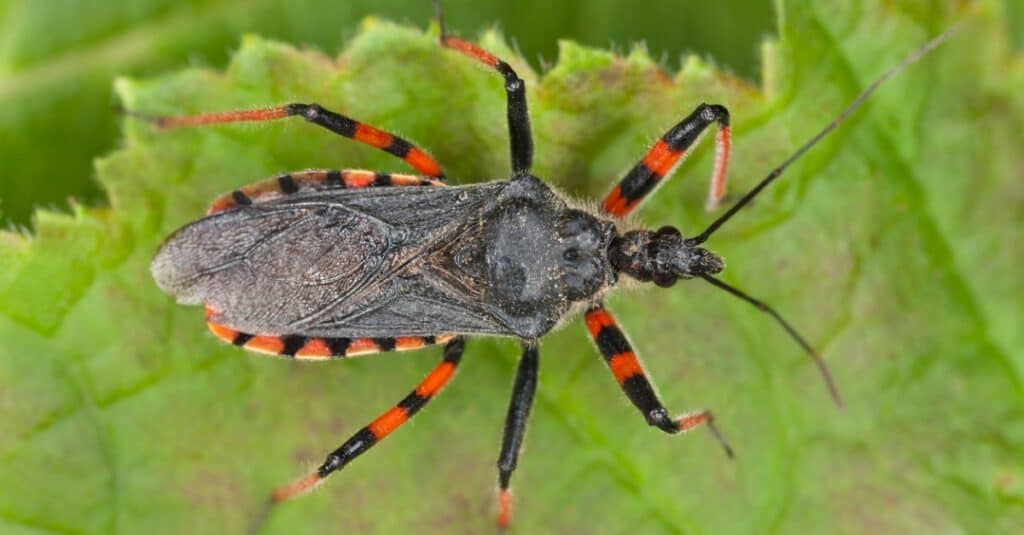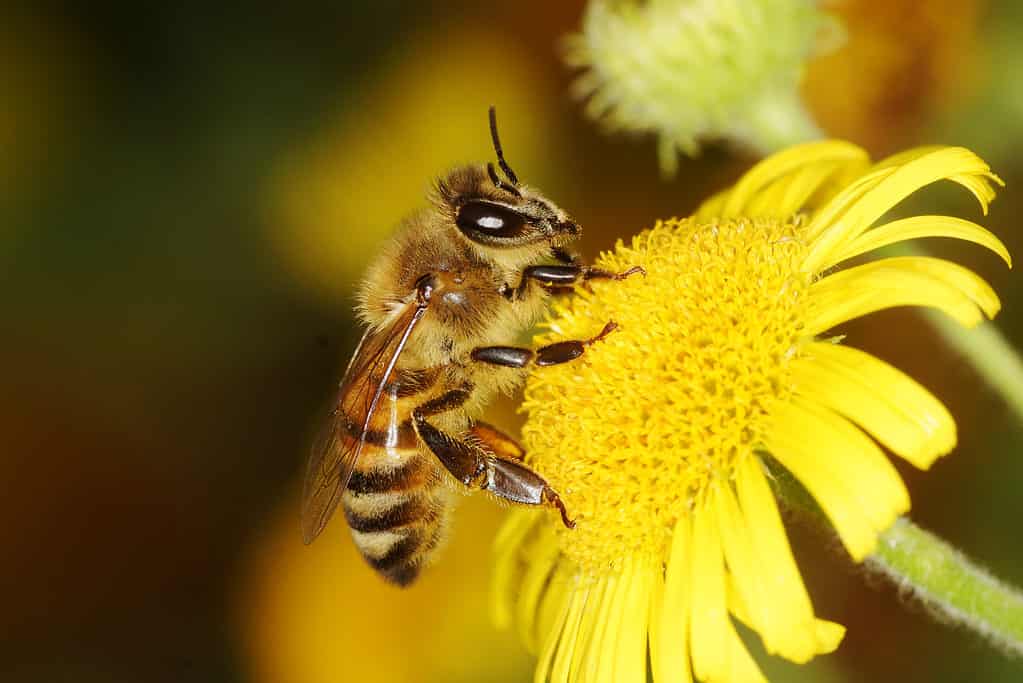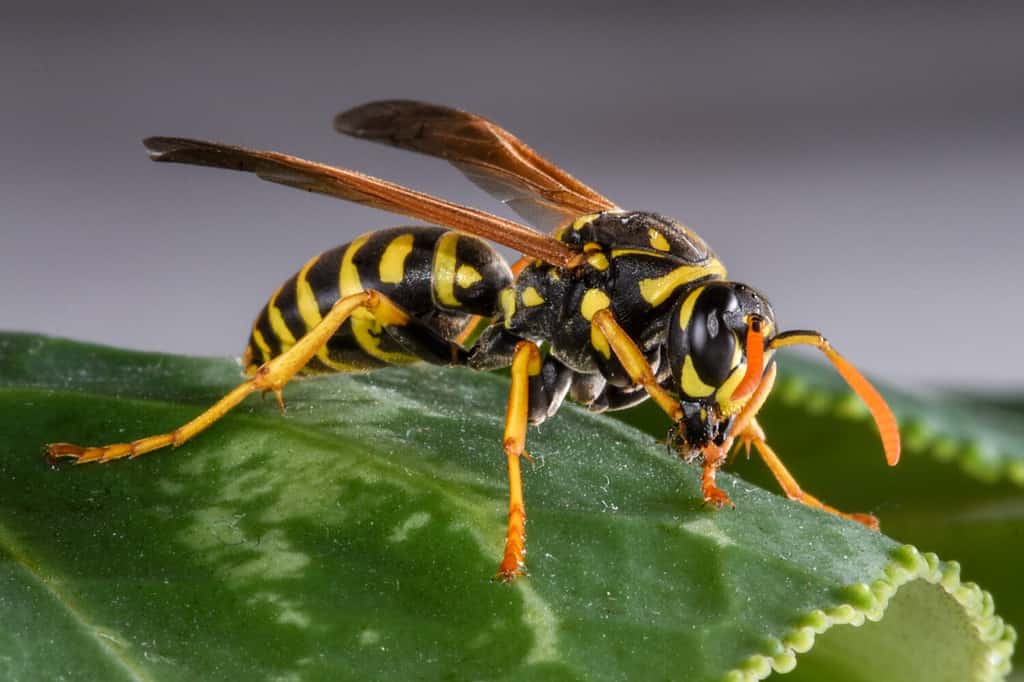Some make buzzing sounds as they whip past your head, making your blood run cold (especially if you know you’re allergic). Discover the most dangerous flying animals in Texas! Learn what the consequences of a bite or sting from any of these flying insects might mean for you.

1. Kissing Bugs
Scientific name: Triatominae
Before kissing bugs reach the adult stage, they first go through five distinct nymph stages. During these initial juvenile stages, they do not have wings. However, once they reach adulthood, they develop wings and at that point, they can fly. These bugs require a host to feed on blood. These bugs are distinguished by their cone-shaped heads and when they bite, they prefer to go to your face around your eyes or your mouth. The proximity to the mouth is what ultimately granted these dangerous bugs their name.

You can blame the kissing bug for spreading Chagas disease.
©Henrik Larsson/Shutterstock.com
Why are these bugs dangerous? Because approximately half of all kissing bugs carry a parasite that they can then pass on to you. If the bug poops right around where it bit you, it can cause you to develop Chagas disease. This disease may sit dormant for over entire decades but when symptoms present, some of the early notable ones include loss of appetite, fatigue, and the development of a rash. With Chagas disease, further complications may include an enlarged heart, esophagus, or colon, as well as intestinal issues. These bugs could very well administer the kiss of death.
2. Bees
Scientific name: Anthophila
Around the spring and fall months, bees are most active, creating their new hives. You can probably recognize honey bees rather easily — they’re the ones with a single stinger that die after they inject their venom. It’s a sacrificial last attempt to protect the hive but honey bees aren’t generally aggressive toward humans. The problem with their venom isn’t just that it hurts, causing sharp, burning pain at the site that later swells, it’s that some people are allergic to honey bee venom. In these cases, symptoms may change your pulse, cause swelling of your tongue and throat, make it difficult to breathe, and may lead to loss of consciousness. Medical attention is required right away in these cases.

Honey bees have barbed stingers, which is why they stay embedded into your skin after they sting.
©Maciej Olszewski/Shutterstock.com
Other bees in Texas include bumblebees, which can also sting and inject venom, leading to a painful experience. These bees differ from honey bees in that their stingers lack barbs. Therefore, if they are in attack mode, they could potentially withdraw their stinger after the first sting and sting repeatedly. Though the symptoms are painful, they generally heal without medical intervention. But again, if you are allergic, the venom could be life-threatening. Other venomous bees in Texas include the carpenter bee and the sweat bee. Both of these bees sting and inject venom, which could pose a serious health risk to those who are allergic to bee venom.
3. Wasps
Scientific name: Vespidae
Like some bees in Texas, wasps don’t have barbed stingers. They can sting you multiple times if they so choose. This only exacerbates the danger for those who are allergic to wasp venom. In most cases, those stung heal on their own but if an allergy is present, there could be dire consequences without immediate medical intervention. In Texas, there are yellow jackets, which usually have a black and yellow body. These may display aggression in the fall season when they’re focused on finding food. There are also paper wasps, which are distinguished by their reddish-brown bodies that sometimes have yellow markings. Whereas yellow jackets nest in the ground, paper wasps prefer building their papery nests in the eaves of buildings, which may include your home.

Yellow jacket stings are painful and could pose a serious health risk to those who are allergic to their venom.
©Randy Runtsch/Shutterstock.com
There are also mud daubers in Texas but they’re not as dangerous as other types of wasps. They are unlikely to sting and if they do, their venom is mild. That doesn’t mean someone who is allergic is completely in the clear, however. Be sure to monitor symptoms and seek medical attention should they worsen. Another wasp that doesn’t have a medically significant sting is the cicada killer. The females are unlikely to sting and the aggressive ones, the males, are unable to sting. The most painful wasp stings are yellow jackets and paper wasps, so be sure to learn what these wasps look like and stay away from their nests if you can. If they happen to be in a high-traffic area, you may need pest control to get rid of them.
Summary of the Top 3 Most Dangerous Flying Animals in Texas
| Flying Animal | Danger | |
|---|---|---|
| 1 | Kissing Bugs | Can cause you to develop Chagas disease – which can lie dormant for years before it makes you very sick |
| 2 | Bees | Their stings can cause a painful, burning wound and can be fatal if you are allergic |
| 3 | Wasps | Can sting multiple times – causing terrible pain and an even bigger threat if you are allergic |
Thank you for reading! Have some feedback for us? Contact the AZ Animals editorial team.








